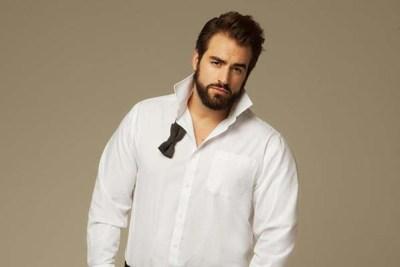 Although the runways have been breaking down gender barriers, implementing more and more co-ed fashion shows, there seems to still remain some gap areas that need to be bridged – one of which is body image issues. Body Positive Movement influencer Tim Gunn has openly discussed on numerous occasions this industry gap, namely that designers seem to refuse to make clothes that fit American women. Body image issues are nothing new in fashion; however, there has never been a greater push towards a more inclusive representation in fashion than we are seeing right now. And yet, the Body Positive Movement, although it has made considerable strides for women, has for the most part overlooked an entire demographic – the male population. It seems that for too long the fashion world has turned a blind eye to body image issues in male fashion and the very unhappy reality that clothing certainly isn’t designed for the majority of average men either.
Although the runways have been breaking down gender barriers, implementing more and more co-ed fashion shows, there seems to still remain some gap areas that need to be bridged – one of which is body image issues. Body Positive Movement influencer Tim Gunn has openly discussed on numerous occasions this industry gap, namely that designers seem to refuse to make clothes that fit American women. Body image issues are nothing new in fashion; however, there has never been a greater push towards a more inclusive representation in fashion than we are seeing right now. And yet, the Body Positive Movement, although it has made considerable strides for women, has for the most part overlooked an entire demographic – the male population. It seems that for too long the fashion world has turned a blind eye to body image issues in male fashion and the very unhappy reality that clothing certainly isn’t designed for the majority of average men either.
The beginnings of Male Body Positive

The gap in the Body Positive Movement
The Body Positive Movement in the female fashion sector continues to pick up steam, with major fashion models like Ashley Graham and Tess Holliday now beginning to populate mainstream fashion. The result is a more authentic and inclusive display of body image in fashion and a better understanding of beauty overall. So why is there a lag in the male sector?

However, on the other hand, male Body Positivity faces a cruel double standard that it is just not being taken seriously. American Eagle – supposed champion in female the Body Positive Movement with their #AerieReal campaigns – is an excellent example of this. They released a supposed male Body Positive video that ended up being a big joke. Although the company was attempting to be light and humorous, they made male body insecurity into a joke and reduced male Body Positivity to a non-serious matter. This reveals a ridiculous double-standard that is holding the Body Positive Movement back. Luckily there are a few men boldly speaking up against such thinking, like Notoriously Dapper – featured in the #AerieMan video – and Zach Miko. If men keep speaking up and demanding change, thinking will begin to shift and their voices will be heard. Only when the male modeling and fashion industries finally start following suit and sync with the female Body Positive Movement can body positivity take a real, meaningful step forward; a step toward a more authentic and inclusive display of beauty and body image in fashion as a whole.
The problem with body positivity
When speaking about body positivity, there is one thing that we cannot stress enough. Body positivity should be all about understanding that not everybody looks the same, that men, as well as women come in many shapes and sizes and that we should not all think of the way we look in relation to the way models look. This being said, it needs to be pointed out really strongly that there is a difference between supporting diversity and celebrating unhealthy bodies. Today, we see a lot of people getting on the train that promotes problems such as obesity as “beautiful”. While it can be accepted that some people find bad health attractive, there is no way we can support an unhealthy body and claim it to be a beauty standard. Yes, we all need to be on board with the fact that some men are bigger and some men are not as tall and muscular as models (we actually think that thin men should be the face of the body positivity movement more than bigger guys), but we should also agree that once your body size or shape is the cause of health problems, your body should be addressed immediately.
In the end, health is what looks good and, while it is true that health comes in many shapes and sizes, we should not kid ourselves and see it where it is not.
Therefore, to conclude we need to say that being positive about your body means accepting it and making all the effort possible to keep it in optimal shape, whatever your natural shape might be.
Fraquoh and Franchomme
Further reading:
Discussions on Body Dysmorphic Disorder
The two sides of a coin: Men’s body image considerations
P.S. We want to hear from you! What do you think of the Body Positive Movement? Do you believe that thin men should actually be the face of the movement? What is the body type you relate to? Share your feedback, questions or thoughts in the comments below! For more articles on style, fashion tips and cultural insights, you can subscribe to Attire Club via e-mail or follow us on Facebook, Twitter or Instagram!

